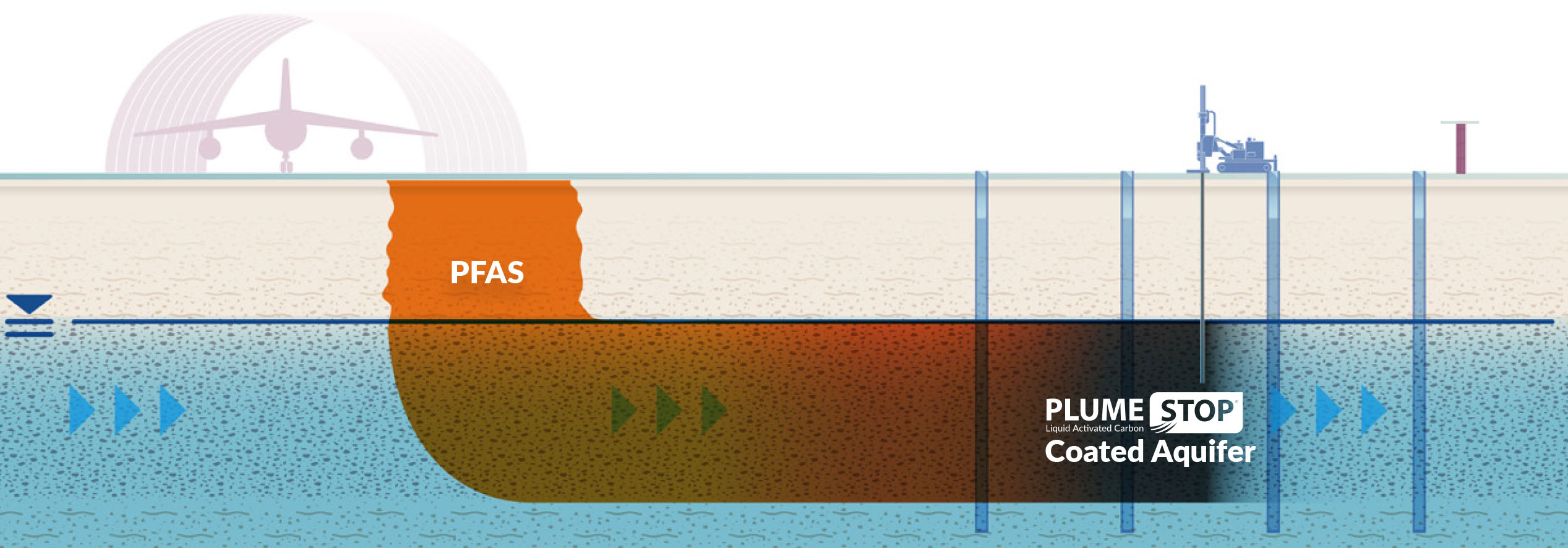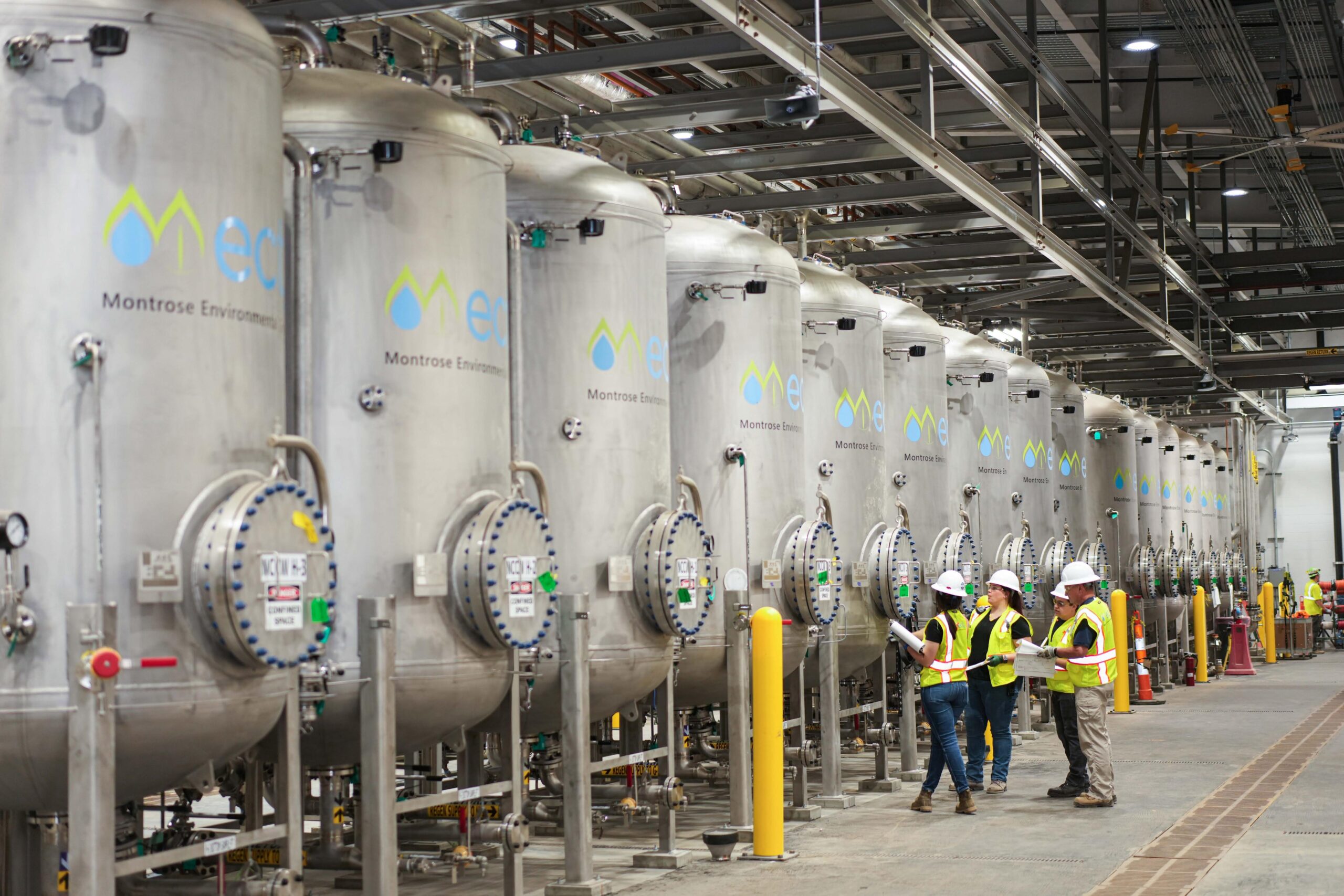Advanced Approaches for Efficient PFAS Contamination Elimination
The consistent obstacle of PFAS contamination requires the exploration of innovative removal approaches that can effectively address these damaging substances. Ingenious modern technologies, such as innovative oxidation processes and different adsorption methods, have actually arised as encouraging remedies in mitigating PFAS from impacted atmospheres.
Comprehending PFAS Characteristics
Although per- and polyfluoroalkyl materials (PFAS) have been widely used in different industrial and consumer products due to their one-of-a-kind buildings, their perseverance in the setting poses considerable difficulties to public wellness and security. PFAS are a team of artificial chemicals characterized by a carbon-fluorine bond, one of the toughest chemical bonds understood, which adds to their outstanding stability and resistance to destruction. This stability enables PFAS to accumulate in the atmosphere and living organisms, leading to possible unfavorable health effects.
These same residential or commercial properties contribute to their environmental persistence, as PFAS do not conveniently damage down through all-natural processes. Recognizing the chemical buildings of PFAS is important for developing reliable methods to manage and mitigate their ecological effect.
Innovative Remediation Technologies
The perseverance of PFAS in the atmosphere has stimulated the advancement of innovative remediation technologies targeted at efficiently eliminating these pollutants from affected ecosystems. Among the most appealing methods are innovative oxidation procedures (AOPs), which make use of effective oxidants to break down PFAS substances into less unsafe compounds. AOPs can be customized to target specific PFAS frameworks, enhancing their effectiveness.
One more emerging technology is making use of adsorption media, such as activated carbon and ion exchange resins, which can uniquely capture PFAS from infected water. These products have actually shown considerable elimination efficiencies, although routine replacement and regeneration are required to preserve efficiency.
Membrane layer filtration strategies, including reverse osmosis and nanofiltration, are additionally acquiring grip in PFAS removal. These techniques can effectively separate PFAS from water, providing a viable remedy for treating contaminated resources. Furthermore, thermal treatment methods, such as incineration, can disintegrate PFAS right into safe results, though they need careful monitoring to regulate discharges.
Jointly, these ingenious remediation innovations represent considerable improvements in the continuous fight against PFAS contamination, providing various strategies to recover afflicted atmospheres and safeguard public health.

Bioremediation Methods
Bioremediation methods offer a promising strategy to dealing with PFAS contamination by utilizing the all-natural capabilities of microbes to weaken these consistent compounds (m270 waste management). This approach includes the usage of bacteria, fungis, and other germs that can metabolize or transform PFAS substances right into less damaging byproducts
Recent improvements in molecular biology and ecological microbiology have boosted our understanding of microbial neighborhoods and their potential functions in PFAS destruction. Researchers are proactively discovering particular pressures of bacteria, such as Pseudomonas and Bacillus, which have shown the capacity to break down specific PFAS substances.
In situ bioremediation methods, where microbes are stimulated directly in polluted settings, can be particularly efficient. This strategy frequently includes the application of nutrients or electron benefactors to advertise microbial growth and activity. Furthermore, straight from the source ex-spouse situ approaches, such as bioreactors, allow for controlled problems that can maximize destruction rates.
Despite the guarantee of bioremediation, obstacles continue to be, consisting of the complex nature of PFAS compounds and the requirement for considerable field testing - m270 waste management. Continued r & d will certainly be critical to improve these techniques and examine their performance in varied environmental contexts
Adsorption and Filtration Techniques
Attending to PFAS contamination usually entails using adsorption and filtration approaches, which are made to get rid of these relentless chemicals from water and dirt. Amongst the different methods, triggered carbon adsorption is commonly utilized due to its high area and porosity, allowing effective trapping of PFAS particles. Granular turned on carbon (GAC) systems are specifically preferred for treating large volumes of infected water, while powdered turned on carbon (SPECIAL-INTEREST GROUP) can be utilized for smaller-scale applications.
Ion exchange resins also reveal assurance in PFAS elimination, working by exchanging PFAS ions with much less dangerous ions in the water. This technique has demonstrated performance in focusing PFAS compounds, facilitating their succeeding removal. Additionally, membrane layer filtering techniques, such as reverse osmosis and nanofiltration, run by utilizing semi-permeable membranes to separate PFAS from water, properly minimizing their concentrations.
While these methods are reliable, they need to be very carefully chosen based on the certain PFAS compounds existing and the environmental context. Continuous advancements in products science and design are causing the advancement of novel adsorbents and filtering systems that enhance elimination efficiencies and lower operational costs, therefore boosting total removal efforts.
Regulatory and Plan Considerations
Just how can effective regulative structures improve the monitoring of PFAS contamination? Extensive plans are necessary to make certain a coordinated and robust feedback to the challenges presented by per- and polyfluoroalkyl materials (PFAS) Regulations can establish clear standards for monitoring, reporting, and remediating PFAS-contaminated look at this web-site sites, cultivating accountability amongst sectors and public entities. (m270 waste management)

On top of that, economic incentives and gives can be incorporated right into policies to motivate the adoption of sophisticated remediation modern technologies. Policymakers ought to additionally prioritize research and growth, ensuring that emerging techniques for PFAS elimination are verified and executed successfully.
Moreover, public awareness and interaction are important parts of any kind of governing strategy, empowering communities to advocate for their health and wellness. Eventually, a well-structured regulative atmosphere will certainly not just improve the administration of PFAS contamination however likewise promote sustainable methods that secure future generations.
Final Thought
In recap, the intricacy of PFAS contamination requires the adoption of advanced remediation methods. Innovative innovations such as advanced oxidation processes, adsorption techniques, and membrane filtration have actually shown substantial effectiveness in eliminating these consistent compounds from contaminated water resources. In addition, regulative frameworks need to progress to support the implementation of these technologies, making certain secure and efficient administration of PFAS pollutants. Proceeded study and growth in this field continue to be vital to addressing the difficulties presented by PFAS contamination.